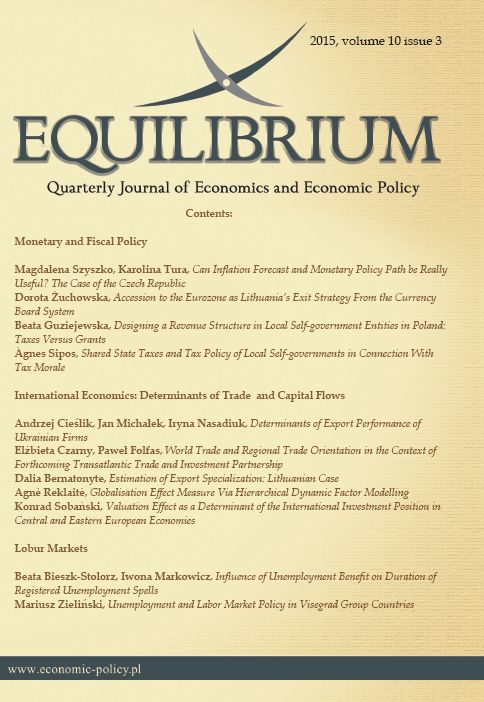Unemployment and Labor Market Policy in Visegrad Group Countries
Unemployment and Labor Market Policy in Visegrad Group Countries
Author(s): Mariusz ZielińskiSubject(s): Economy, National Economy
Published by: Instytut Badań Gospodarczych
Keywords: unemployment; labor market policy; discrimination; Visegrad Group countries
Summary/Abstract: In the recent years, an economic crisis has appeared in most economies. It affected the labor market situation. This article refers to the changes in the labor markets of the Visegrad Group countries. The analysis concerns the relations between the economic crisis, the level and structure of unemployment (taking into account the situation of women and young people as the groups strongly exposed to unemployment), and the level and structure of expenditures within the labor market policy. The article is based on the data published by Eurostat, using the tools of descriptive statistics, and statistical indexes, in particular. The research period covers the years 2007-2012, which is dictated by the availability of comparable statistical data. An analysis of the data indicates that the economic crisis increased the economic activity of the population, which contributed to an increase in unemployment. There is no discrimination against women in the labor market, but there has been a serious increase in unemployment among young people. With the increase in unemployment, the expenditures on the total labor market policy have increased, as have those on passive labor market policies and labor market service. Expenditures on active labor market policies (ALMPs) grow relatively more slowly, which may be especially evident in the case of expenditure on training.
Journal: Equilibrium. Quarterly Journal of Economics and Economic Policy
- Issue Year: 10/2015
- Issue No: 3
- Page Range: 185-201
- Page Count: 16
- Language: English

